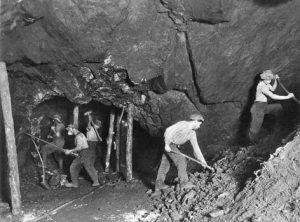Welcome
La miniera di Gambatesa è stata il più grande giacimento di manganese d’Europa e miniera attiva sino al 2011, anno in cui la società titolare della concessione ha rinunciato a quest’ultima adducendo ragioni di antieconomicità . Gambatesa è stata il primo esempio sul territorio nazionale di miniera attiva fruibile al pubblico e la sua musealizzazione è avvenuta alla fine degli anni ’90; le due attività sono proseguite parallelamente per quasi 15 anni sotto il regime minerario per il quale, in virtù del R.D.1443/1927, l’ingresso ai visitatori è autorizzato dal Direttore sotto la propria responsabilità . Decaduta la concessione mineraria, il nuovo quadro normativo non consentiva la fruizione di siti minerari dismessi e ciò ha costretto il proprietario del sito, Ente Parco Aveto, ad interrompere gli accessi al sottosuolo.
In April 2014 was presented a draft regional law (pdl 334/2014) aims to fill this legal vacuum, a proposal that prompted the regional government to enact L.R. 31/2014 which represents today the legislative instrument that makes such sites to the public, while a series of fulfilments; the mines of Gambatesa, after nearly two years of retrofit was finally (re) opened on 9 December 2016.
Il sito minerario di Gambatesa, nei suoi beni mobili ed immobili, è stato eletto a bene culturale dello Stato e ciò ha consentito di andare in deroga su alcuni interventi e di poter mantenere le peculiarità e caratteristiche originali del sito: il visitatore che oggi decide di visitare il museo minerario ha l’opportunità di entrare in miniera con l’originale convoglio ferroviario dei minatori, a bordo di vagoncini del minerale opportunamente modificati per il trasporto dei visitatori e di percorrere a piedi, accompagnato da guide appositamente formate, le gallerie della miniera nel loro aspetto originale; un ambiente quindi umido, con stillicidio diffuso che si snoda lungo percorsi in terra battuta e lungo la sede ferroviaria, appena illuminata.
 The Museum is the mountain itself, with its world, true monument to the work and the sacrifice of hundreds of miners who have laboriously reclaimed from the womb of mother earth one of his most valuable fruits: an army of heroes whose deeds are narrated by galleries, from watering holes, from wooden armatures, by wagons and mechanical diggers "frozen" on their last day of work. A real photograph of yore.
The Museum is the mountain itself, with its world, true monument to the work and the sacrifice of hundreds of miners who have laboriously reclaimed from the womb of mother earth one of his most valuable fruits: an army of heroes whose deeds are narrated by galleries, from watering holes, from wooden armatures, by wagons and mechanical diggers "frozen" on their last day of work. A real photograph of yore.
Each meter of the gallery are working days, every drop of water on the head that reminds us of the difficult working conditions, the little light that evokes the setting at times disturbing but mostly charming and intimate in which the miner spoke to the mountain, he watched her, she read.
This is the choice and the bet: do not restart the time it stopped, keep the clock hands nailed to the last day of checkout because only in this way the mountain can tell his story. A small train uncomfortable and noisy, a damp and poorly lit.
A mine.
For more information:


